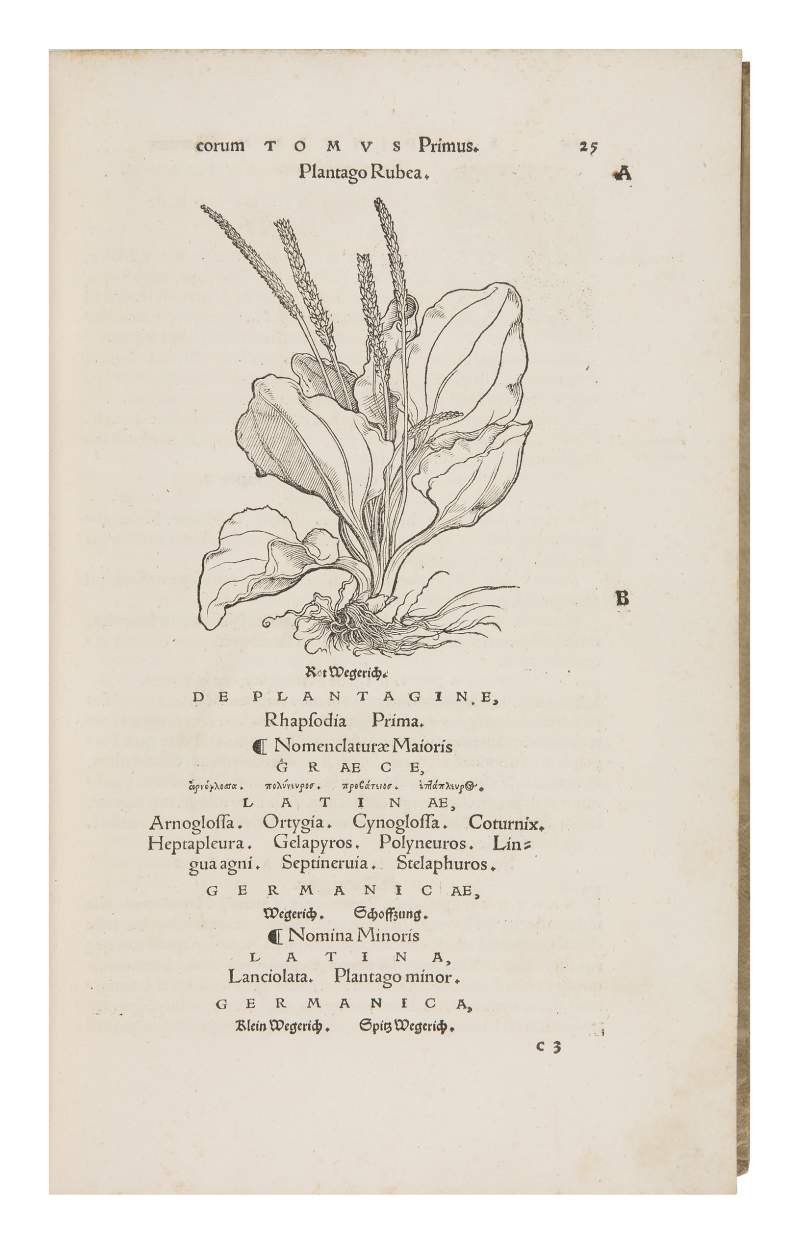Artworks


Otto Brunfels, Herbarum vivae eicones ad naturae imitationem – Novi Herbarii Tomus II. Strasbourg: Johann Schott, 1531-1532.
Second edition of volume 1, first edition of volume 2.

This work is now sold.
In the Middle Ages, herbals were repositories of medical knowledge more than tools of identification and classification. Their images were, for the most part, stylized and schematic, often copied from previous herbals rather than drawn from live specimens. Verbal descriptions were also scant; because many originated in ancient sources such as Dioscurides, Pliny, or Apuleius, they featured Mediterranean plants and so were not of much use to northern European readers.
Otto Brunfels’ 16th-century herbals are not very different in content from their medieval predecessors. Relying on descriptions from ancient texts, they do not analyze plant structures or provide new morphological descriptions, although they do innovatively give equal status to both common weeds and more unusual plants. Brunfels’ most revolutionary contribution was his choice of artist to accurately portray these ‘living portraits of plants,’ as promised in the title. For this book, Hans Weiditz (before 1500–c. 1536) created woodcuts that became a new standard for realism in botanical illustration. The illustrations were drawn from live or dried specimens rendered in the utmost naturalistic detail.
The first volume of Brunfels' herbals was published in Strasbourg in 1530. The second volume bears the year 1531 in the title but 14 February 1532 in the colophon. The second edition of the first volume appeared a little later in that same year, perhaps to form a complete edition, as in the present copy.
The large appendix at the end of the second volume contains extracts and articles by twelve authors, including the first published writings of both Hieronymus Bock and Leonhard Fuchs.



